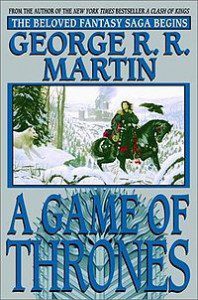There are a lot of different types of anime. Some are slice of life shows depicting the day to day occurrences in the lives of teenagers/young adults/whoever. Some are supernatural shows with death gods, ghosts and monsters. Some are thrillers with gang warfare and escalating tensions. And some revolve around the actions of bizarre, unique characters with a certain spin on the world around them. Fairly straightforward. And then there is the show “Durarara.” What makes this show so unique and fascinating is that it managed to be all these types of anime at the same time. Interested? Read on.

Durarara was one of the heroes of the 2010 anime season. Based on a series of light novels (much like the rampantly popular Haruhi Suzumiya series), Durarara focused on the lives of three high school students living in Tokyo. Oh wait, I mean to say it revolved around a shinigami’s search for her missing head and the scientist who loves her. No, that’s not right either- it actually chronicled the rising tensions between rival street gangs in the back allies…or was it centered around the guy in the bartender’s suit who had a penchant for hurling vending machines at people he didn’t like…or the serial slasher who is terrorizing the streets after dark…or the corrupt researcher looking for her missing brother…no, I got it- it’s about the guy in the leather jacket who is playing everyone for a fool…or maybe not.

No, Durarara revolves around all these plots. Sound confusing? Durarara is an ensemble piece at its absolute best, weaving together many different tales told from the perspectives of over a dozen different characters. Like a George R. R. Martin novel, there is no one direct protagonist to the series at all, but rather a cluster of intertwined destinies, shared experiences, chance encounters and relationships which pace themselves out over 26 episodes. And while it sounds convoluted or overly complex on paper, the final execution is anything but.
One story does in fact follow the lives of three high school freshman- city newcomer Mikado Ryugamine, who moved away from his country home to attend classes in the city. At the same school, his childhood friend Masaomi Kida is already a student with a “troubled” past. There they meet Anri Sonohara, a buxom but very quiet girl who follows them around and seems attracted to Mikado. Kida is already very well connected in town and introduces Mikado to some of the other colorful characters who live in their world: “deluded” otaku Erika Karisawa and Walker Yumasaki; their former gang member friends, the level-headed Kyohei Kadota and careful Saburo Togusa; the scheming Izaya Orihara, with his fingers in every pie; fellow classmate Seiji Yagiri, who is in love with, of all things, a severed head; the imposing but gentle Africa-Russian Simon Brezhnev; and the seemingly unstable Shizuo Heiwajima, who takes out his anger by throwing things at people (usually, but not limited to, vending machines). He also tells Mikado about the local urban legend of the black biker, who rides through the city by night on a seemingly endless mission. This biker is the aforementioned shinigami, a Celtic fairy by the name of Celty Sturluson, who lives by day with researcher Shinra Kishitani, who is trying to aide her in her search for her missing head…which is currently the object fascinating Seiji. And while all this is going on, a conflict is brewing between two rival street gangs, the Dollars and the Gold Bandannas, over turf, perceptions of violence and instigation from other figures.

If it sounds like a lot to swallow, it is. But the true treasure of Durarara is how all these elements manage to fit into a very effective story told from multiple points of view. Each of the characters mentioned above receives “screen time” over the course of the series, and given a chance to explain their motivations, desires and dreams. Rather than detract from the series as a whole, these divergent story-lines actually make the show more satisfying, as they offer a glimpse into the day to day workings of the many residents of the city. Watching these same characters come across, and interact with, each other illustrates how relationships are fostered and strengthened over time, and how people come to rely upon each other to “get the job done” and progress forward.
There are distinct story arcs within Durarara as a whole, with each one affecting one or more groups of characters at any given time. The first half is less apparent, as it focuses on members of the mysterious Dollars organization, and their rampant internet-based presence, as well as introducing many of the players who will take a larger part in the series. As the show progresses, new stories deal with the appearance of a “serial slasher,” a specialized task force created to track down Celty, increasing hostility between the Dollars and the Gold Bandannas, and a healthy look at the past, and how it shaped the motivations of the main characters. Bit characters take on more prevalent roles, main characters reveal more layers to their personalities, and even new characters are introduced. Admittedly, towards the second half of the show the number of people to keep track of is daunting, and the ending seemed rushed and a little unfulfilled after so many episodes of action, suspense and drama.

But this is a small price to pay in the end. While it may end on something of a whimper, the episodes all leading up to the final act are extremely well-paced, well written, well acted and satisfying. And when all is said and done, the notion of “is this it? I want more!” will definitely come into play. One of the great strengths Durarara plays to is its down to earth characters and compelling stories, and these drag the viewer in and keep them hooked.
Durarara is currently being released via Aniplex, and the first 9 episodes of the series have been released.



[…] This post was mentioned on Twitter by Amy and Charles Dunbar, Real Otaku Gamer. Real Otaku Gamer said: New Blog Post: Students, Shinigami and Flying Vending Machines- Just Another Day in the World of Durarara http://bit.ly/eQjpF7 […]